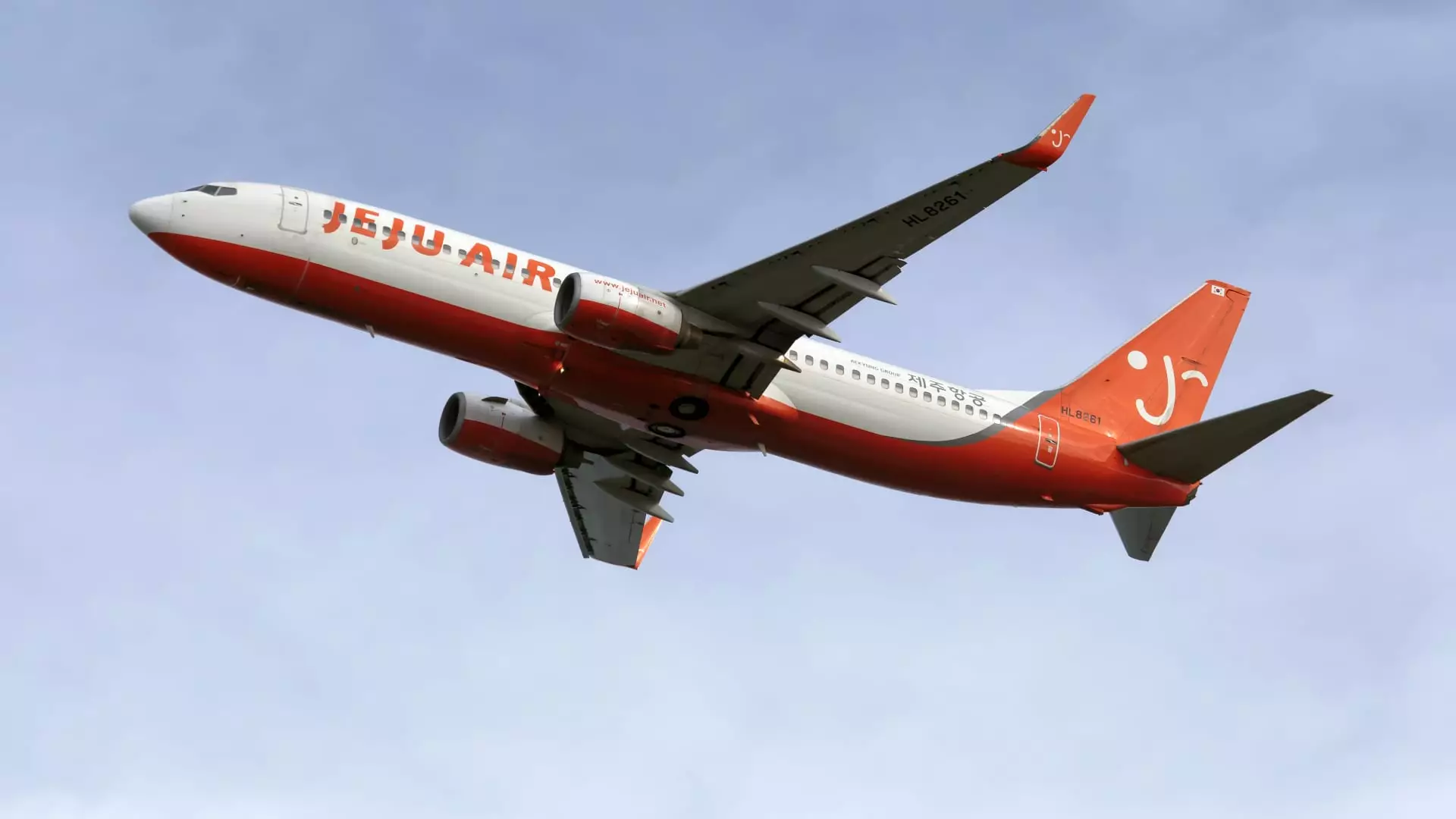On an ordinary day in southwestern South Korea, an extraordinary tragedy unfolded as a Jeju Air flight, carrying 181 passengers and crew, conducted a belly landing at Muan International Airport. The incident transpired without the deployment of the landing gear, resulting in a catastrophic fire that claimed nearly all lives on board, save for two survivors. This disaster marks a significant blow to South Korea’s aviation safety record, reminiscent of the nation’s worst air disasters in recent decades, and has prompted a wave of scrutiny among aviation authorities and customers alike.
Following the incident, Choi Sang-mok, South Korea’s acting president, took swift action by mandating an emergency inspection of all Boeing 737-800 aircraft in operation across the country. The urgency of this directive underscores the widespread concern regarding the integrity of this aircraft model, particularly given its prevalence in commercial aviation worldwide. The Boeing 737-800, a stalwart of the industry, boasts a solid safety record, but the sheer numbers involved—nearly 4,400 of these planes in service globally—make any incident involving them a matter of high interest and concern.
South Korea’s decision to focus on the Boeing 737-800 comes in the shadow of the Boeing 737 Max, a more recent model that faced immense scrutiny following two tragic crashes that left 346 people dead. While the Max has been grounded for extended periods and redesigned, the 737-800 continues its service, with the Jeju air disaster igniting debates about whether its extensive use could come under the microscope.
The aircraft involved in this tragedy had a storied past. Delivered in 2017, the plane had previously flown for European low-cost carrier Ryanair, and was approximately 15 years old at the time of the accident. Such aging machinery has raised questions about mechanical reliability and the potential for malfunctions. However, aerospace experts assert that finding a design flaw in this long-standing aircraft model is exceedingly unlikely. Richard Aboulafia, managing director at AeroDynamic Advisory, highlights the improbability of uncovering any inherent technical shortcomings at this stage, given the historical performance of the aircraft over the years.
As investigators delve deeper into this incident, a multitude of questions remain unanswered. Specifically, the lack of landing gear deployment calls into question potential failures in the aircraft’s hydraulic systems, which normally provide pilots with the option to extend the landing gear manually, even in the event of technical difficulties. A prominent theory circulating among aviation experts suggests the possibility of a bird strike that could have incapacitated the plane’s engines and led to an immediate crisis. Retired air safety investigator Jeff Guzzetti explains that if such an event occurred at cruising altitude, the flight crew might have been deprived of the necessary time to execute emergency protocols, exacerbating the situation.
Additional commentary adds a layer of complexity to the investigation, with Guzzetti indicating that had the aircraft not tragically collided with a hard surface at the runway’s end, there could have been a greater chance for a survivable outcome. The juxtaposition of quick response actions against the impending tragedy manifests the chaos that can ensue in aviation mishaps.
The task of piecing together the events surrounding this incident will not fall solely on South Korean authorities; it will be a collaborative effort guided by various entities including the National Transportation Safety Board (NTSB) of the United States, which is leading the investigation. Both Boeing and the Federal Aviation Administration (FAA) will be actively involved, in accordance with international protocols whereby the country where the accident occurs takes charge. This collaboration underscores the global nature of aviation safety, as findings from this disaster have the potential to affect regulations and operational protocols worldwide.
As investigators work tirelessly to uncover the underlying factors that led to the tragic belly landing of Jeju Air Flight 7C2216, the aviation industry watches closely. This incident not only serves as a stark reminder of the dangers inherent in air travel but also emphasizes the pressing need for rigorous safety standards and investigations that ensure accountability and prevent future tragedies.

